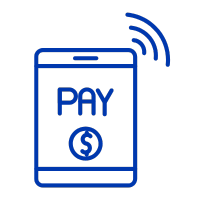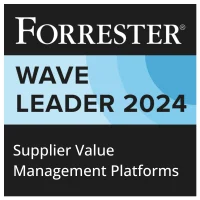Supply Chain Visibility (SCV) refers to the capability to track and trace components, parts, or products in transit from the manufacturer to their final destination. It involves the transparent flow of information regarding inventory status, order processing, and shipments across the supply chain, enabling organizations to monitor deliveries in real-time, predict supply chain risks, optimize operations, and ensure smoother collaboration between stakeholders.
Key Benefits
– Improved operational efficiency: Supply Chain Visibility (SCV) allows businesses to streamline their operations by providing real-time insights into supply chain processes. This leads to reduced bottlenecks, improved resource allocation, and enhanced overall productivity.
– Enhanced decision-making: With comprehensive visibility into every stage of the supply chain, organizations can make informed decisions quickly. This ability to access and analyze data in real-time helps mitigate risks and respond effectively to unforeseen disruptions.
– Cost reduction: By identifying inefficiencies and optimizing logistics and inventory management, SCV enables companies to reduce costs across the supply chain. This includes savings from improved transportation planning and inventory holding costs.
– Risk mitigation: SCV helps in identifying potential risks and vulnerabilities within the supply chain. By monitoring supplier performance and geopolitical events, businesses can proactively manage supply chain risks and maintain continuity.
– Better customer satisfaction: Enhanced visibility ensures that products are delivered on time and in full, meeting customer expectations consistently. This leads to improved customer relationships and competitive advantage in the market.
Related Terms
– Improved operational efficiency: Supply Chain Visibility (SCV) allows businesses to streamline their operations by providing real-time insights into supply chain processes. This leads to reduced bottlenecks, improved resource allocation, and enhanced overall productivity.
– Enhanced decision-making: With comprehensive visibility into every stage of the supply chain, organizations can make informed decisions quickly. This ability to access and analyze data in real-time helps mitigate risks and respond effectively to unforeseen disruptions.
– Cost reduction: By identifying inefficiencies and optimizing logistics and inventory management, SCV enables companies to reduce costs across the supply chain. This includes savings from improved transportation planning and inventory holding costs.
– Risk mitigation: SCV helps in identifying potential risks and vulnerabilities within the supply chain. By monitoring supplier performance and geopolitical events, businesses can proactively manage supply chain risks and maintain continuity.
– Better customer satisfaction: Enhanced visibility ensures that products are delivered on time and in full, meeting customer expectations consistently. This leads to improved customer relationships and competitive advantage in the market.
References
For further insights into these processes, explore Zycus’ dedicated resources related to Supply Chain Visibility Scv:
- The Why, What & How of Contract Management: Part 3 – Spoke in the Wheel
- The Case for GenAI-Powered Intake Management: A Team Discussion
- Procurement in a Galaxy very very near you: How Yoda’s teachings apply to your procurement processes. (Part 1)
- Analyze Spend Analysis: Supplier and Commodity information as key drivers to spend management
- Procurement Transformation in Action: Success Stories
White Papers
Master the UK Procurement Act 2023: Ensure Compliance & Drive Procurement Excellence

Filter by
Compliant Invoicing
Compliant Invoicing refers to the process of generating, submitting, and managing invoices in adherence with legal, regulatory, and contractual requirements.
Continuity Plan
A Continuity Plan is an organized set of policies and procedures designed to ensure that a company’s essential operations can
Cost Modeling
Cost Modeling in procurement refers to the analysis and estimation of the total cost of ownership of a product or
Contract Audit
Contract Audit is a systematic evaluation of agreements and related documentation to ensure compliance with contractual terms, identify discrepancies, and
Procurement Cycle
The Procurement Cycle refers to the end-to-end process through which an organization identifies its needs, sources suppliers, negotiates contracts, places
Procurement Master Data Management
Procurement Master Data Management is the disciplined approach to managing core, consistent procurement information, including supplier, product, and contract data,






















































